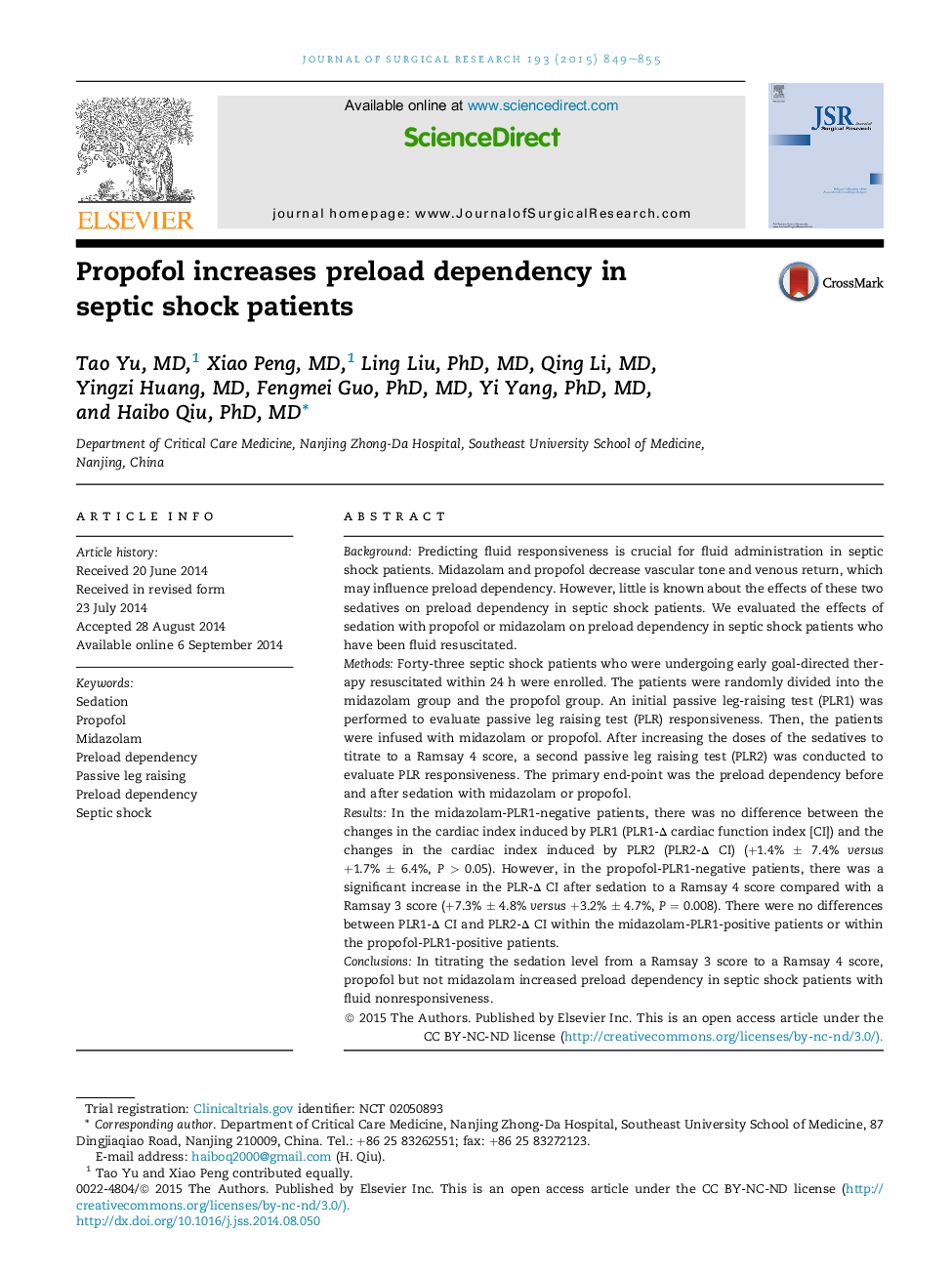| کد مقاله | کد نشریه | سال انتشار | مقاله انگلیسی | نسخه تمام متن |
|---|---|---|---|---|
| 6253661 | 1288401 | 2015 | 7 صفحه PDF | دانلود رایگان |
BackgroundPredicting fluid responsiveness is crucial for fluid administration in septic shock patients. Midazolam and propofol decrease vascular tone and venous return, which may influence preload dependency. However, little is known about the effects of these two sedatives on preload dependency in septic shock patients. We evaluated the effects of sedation with propofol or midazolam on preload dependency in septic shock patients who have been fluid resuscitated.MethodsForty-three septic shock patients who were undergoing early goal-directed therapy resuscitated within 24 h were enrolled. The patients were randomly divided into the midazolam group and the propofol group. An initial passive leg-raising test (PLR1) was performed to evaluate passive leg raising test (PLR) responsiveness. Then, the patients were infused with midazolam or propofol. After increasing the doses of the sedatives to titrate to a Ramsay 4 score, a second passive leg raising test (PLR2) was conducted to evaluate PLR responsiveness. The primary end-point was the preload dependency before and after sedation with midazolam or propofol.ResultsIn the midazolam-PLR1-negative patients, there was no difference between the changes in the cardiac index induced by PLR1 (PLR1-Πcardiac function index [CI]) and the changes in the cardiac index induced by PLR2 (PLR2-ΠCI) (+1.4% ± 7.4% versus +1.7% ± 6.4%, P > 0.05). However, in the propofol-PLR1-negative patients, there was a significant increase in the PLR-ΠCI after sedation to a Ramsay 4 score compared with a Ramsay 3 score (+7.3% ± 4.8% versus +3.2% ± 4.7%, P = 0.008). There were no differences between PLR1-ΠCI and PLR2-ΠCI within the midazolam-PLR1-positive patients or within the propofol-PLR1-positive patients.ConclusionsIn titrating the sedation level from a Ramsay 3 score to a Ramsay 4 score, propofol but not midazolam increased preload dependency in septic shock patients with fluid nonresponsiveness.
Journal: Journal of Surgical Research - Volume 193, Issue 2, February 2015, Pages 849-855
